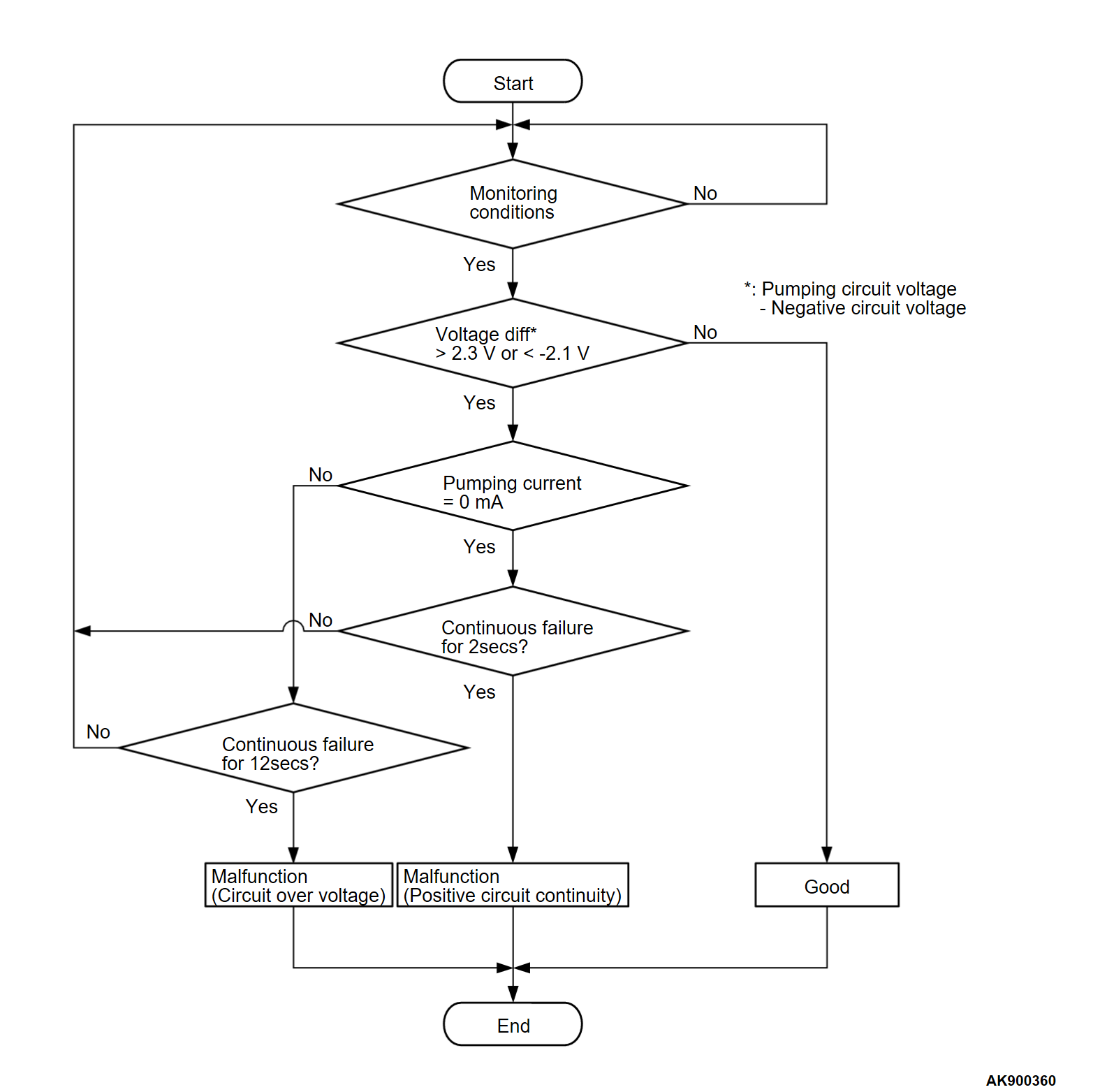DTC P0130: Linear Air-Fuel Ratio Sensor Circuit
TECHNICAL DESCRIPTION
- The ECM effects air/fuel ratio feedback control in accordance with the signals from the linear air-fuel ratio sensor.
- If the linear air-fuel ratio sensor has deteriorated, corrections will be made by the heated oxygen sensor (rear).
DESCRIPTIONS OF MONITOR METHODS
- If the air-fuel ratio detection signal has an abnormality although the linear air-fuel ratio sensor is sufficiently ready to operate, the DTC is stored as a malfunction.
MONITOR EXECUTION
- Continuous
MONITOR EXECUTION CONDITIONS (Other monitor and Sensor)
Other Monitor (There is no temporary DTC stored in memory for the item monitored below)
- Linear air-fuel ratio sensor heater monitor
- Misfire monitor
- Fuel system monitor
Sensor (The sensor below is determined to be normal)
- Mass airflow sensor
- Engine coolant temperature sensor
- Intake air temperature sensor
- Barometric pressure sensor
- Throttle position sensor
- Accelerator pedal position sensor
Check Conditions
- Battery positive voltage is between 10 and 16.5 volts.
- More than 60 - 308 seconds have passed since the engine starting sequence was completed.
Judgment Criteria
- The negative circuit voltage subtracted from the pumping circuit voltage is be lower than -2.1 volts or higher than 2.3 volts for 12 seconds.
- The pumping current is be lower than 0 milli ampere or higher than 0 milli ampere for 12 seconds.
FAIL-SAFE AND BACKUP FUNCTION
- Does not control air-fuel ratio closed loop.
TROUBLESHOOTING HINTS (The most likely causes for this code to be stored are:)
- Linear air-fuel ratio sensor failed.
- Connector damage.
- ECM failed.
DIAGNOSIS
Required Special Tools:
- MB992744: Vehicle communication interface-Lite (V.C.I.-Lite)
- MB992745: V.C.I.-Lite main harness A
- MB992747: V.C.I.-Lite USB cable short
- MB992748: V.C.I.-Lite USB cable long
- MB991958: Scan Tool (M.U.T.-III Sub Assembly)
- MB991824: Vehicles Communication Interface (V.C.I.)
- MB991827: M.U.T.-III USB Cable
- MB991910: M.U.T.-III Main Harness A (Vehicles with CAN communication system)
STEP 1. Test the OBD-II drive cycle.
| caution | To prevent damage to scan tool (M.U.T.-III), always turn the ignition switch to the "LOCK" (OFF) position before connecting or disconnecting scan tool (M.U.T.-III). |
(2) Turn the ignition switch to the "ON" position and delete the DTC.
(3) Carry out the test drive with the drive cycle pattern. Refer to Diagnostic Function - OBD-II Drive Cycle - Pattern 21  .
.
 .
.(4) Check the diagnostic trouble code (DTC).
Is DTC P0130 stored?
STEP 2. Replace the linear air-fuel ratio sensor.
(1) Replace the linear air-fuel ratio sensor.
(2) Carry out a test drive with the drive cycle pattern. Refer to Diagnostic Function - OBD-II Drive Cycle - Pattern 21  .
.
 .
.(3) Check the diagnostic trouble code (DTC).
Is DTC P0130 stored?
 The inspection is complete.
The inspection is complete.![[Previous]](../../../buttons/fprev.png)
![[Next]](../../../buttons/fnext.png)

